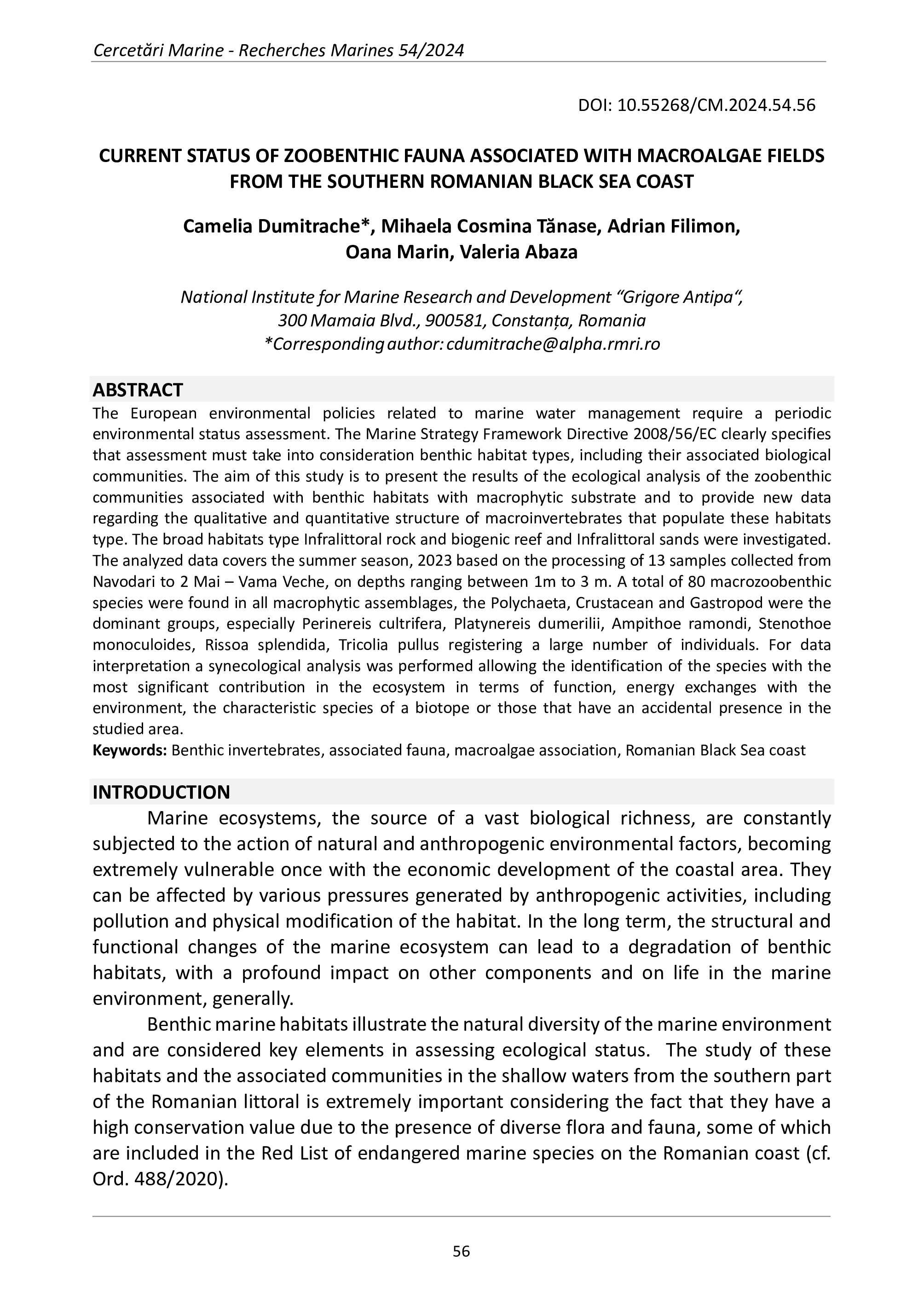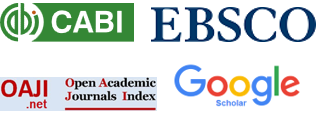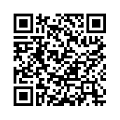Current status of zoobenthic fauna associated with macroalgae fields from the southern Romanian Black Sea coast
DOI:
https://doi.org/10.55268/CM.2024.54.56Keywords:
Benthic invertebrates, associated fauna, macroalgae association, Romanian Black Sea coastAbstract
environmental status assessment. The Marine Strategy Framework Directive 2008/56/EC clearly specifies that assessment must take into consideration benthic habitat types, including their associated biological communities. The aim of this study is to present the results of the ecological analysis of the zoobenthic communities associated with benthic habitats with macrophytic substrate and to provide new data regarding the qualitative and quantitative structure of macroinvertebrates that populate these habitats type. The broad habitats type Infralittoral rock and biogenic reef and Infralittoral sands were investigated. The analyzed data covers the summer season, 2023 based on the processing of 13 samples collected from Navodari to 2 Mai – Vama Veche, on depths ranging between 1m to 3 m. A total of 80 macrozoobenthic species were found in all macrophytic assemblages, the Polychaeta, Crustacean and Gastropod were the dominant groups, especially Perinereis cultrifera, Platynereis dumerilii, Ampithoe ramondi, Stenothoe monoculoides, Rissoa splendida, Tricolia pullus registering a large number of individuals. For data interpretation a synecological analysis was performed allowing the identification of the species with the most significant contribution in the ecosystem in terms of function, energy exchanges with the environment, the characteristic species of a biotope or those that have an accidental presence in the studied area.

Downloads
Published
How to Cite
Issue
Section
License
Copyright (c) 2024 Camelia Dumitrache, Mihaela Cosmina Tănase, Adrian Filimon, Oana Marin, Valeria Abaza

This work is licensed under a Creative Commons Attribution-NonCommercial-NoDerivatives 4.0 International License.
This is an open access journal, which means that all content is freely available without charge to the user or his/her institution. Users are allowed to read, download, copy, distribute, print, search, or link to the full texts of the articles, or use them for any other lawful purpose, without asking prior permission from the publisher or the author. This is in accordance with the BOAI definition of open access.






